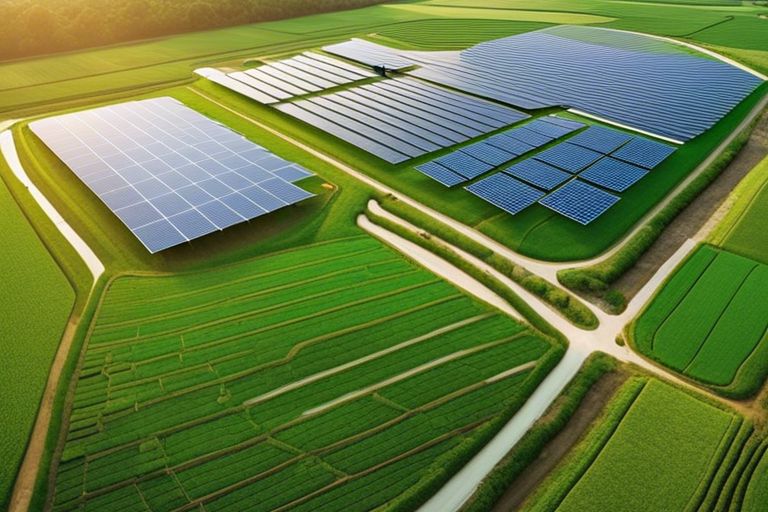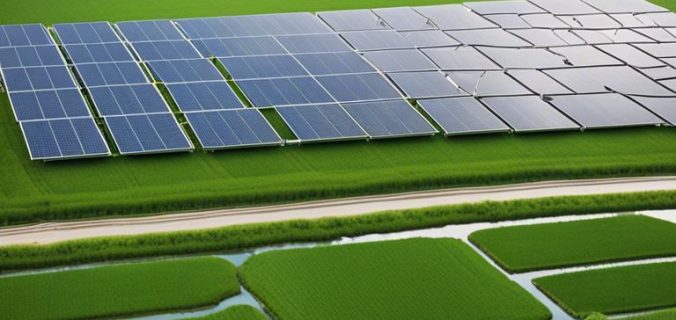Over the years, the environmental impact of rice cultivation has come under scrutiny, with concerns about water usage, chemical fertilizers, and greenhouse gas emissions. In the quest for a more sustainable approach, the concept of the circular economy offers innovative solutions. By rethinking traditional farming practices, implementing resource-efficient techniques, and embracing renewable energy sources, it is possible to transform rice cultivation into a more sustainable and environmentally friendly process.
Key Takeaways:
- Adopting circular economy principles: Implementing practices such as recycling rice straw as animal feed or compost can reduce waste and improve soil health.
- Improving water management: Utilizing technologies like drip irrigation or laser leveling can help conserve water resources and minimize environmental impact.
- Enhancing biodiversity: Integrating native species into rice paddies and creating wetland habitats can foster ecological balance and reduce reliance on harmful pesticides.
Environmental Impact of Rice Cultivation
Water Usage and Pollution
Water usage in rice cultivation is a significant concern due to the high levels of water required for cultivation, often leading to water scarcity in rice-growing regions. Additionally, the use of chemical fertilizers and pesticides in rice farming can result in water pollution, affecting aquatic ecosystems.
Greenhouse Gas Emissions and Climate Change
Any discussion on the environmental impact of rice cultivation must address greenhouse gas emissions, particularly methane. Rice paddies are a major source of methane emissions, contributing significantly to climate change. The production and decomposition of organic matter in flooded rice fields create anaerobic conditions favorable for methane-producing microorganisms.
The methane emissions from rice cultivation are a significant concern for global warming, as methane is a potent greenhouse gas with a much higher warming potential than carbon dioxide. However, there are sustainable rice cultivation practices, such as alternate wetting and drying techniques, that can reduce methane emissions while maintaining crop yields. Implementing these practices is crucial for mitigating the climate impact of rice cultivation.
Opportunities for Sustainability in Rice Cultivation
Any Rice farming innovations create circular economy have the potential to revolutionize the way rice is cultivated, making it more sustainable and environmentally friendly. By embracing new techniques and technologies, rice farmers can greatly reduce their ecological footprint and contribute to the circular economy.
Crop Rotation and Intercropping
Intercropping involves planting different crops together in the same field. This practice can help improve soil fertility, reduce pests and diseases, and increase overall yields. By rotating rice crops with other plants, farmers can enrich the soil, prevent nutrient depletion, and naturally control pests, leading to more sustainable rice cultivation.
Organic Farming and Pest Control
Rice cultivation can benefit greatly from organic farming practices that eliminate the use of synthetic pesticides and fertilizers. By using organic methods such as composting, crop rotation, and biological pest control, farmers can protect the environment, promote biodiversity, and produce healthier rice crops.
Pest control in organic rice farming involves using natural predators, like ducks or beneficial insects, to keep pest populations in check. This method helps to maintain a balanced ecosystem in rice fields and reduces the need for harmful chemical pesticides, ensuring safer food production and a healthier environment for all.
Implementing Circular Economy Principles
Reducing Waste and By-Product Utilization
An crucial aspect of making rice cultivation more sustainable in the circular economy is reducing waste and finding creative ways to utilize by-products. By repurposing rice husks, straw, and wastewater generated during cultivation, farmers can minimize environmental impact and create additional revenue streams.
Closed-Loop Systems and Recycling
An effective way to make rice cultivation more sustainable is through the implementation of closed-loop systems and recycling. By reusing water for irrigation, adopting precision agriculture techniques, and recycling nutrients through composting, farmers can reduce resource depletion and minimize their carbon footprint.
The adoption of circular economy principles in rice cultivation can lead to significant reductions in waste production and environmental contamination, ultimately contributing to a more sustainable agricultural industry. By implementing these strategies, farmers can not only improve their efficiency and profitability but also contribute to a healthier ecosystem for future generations.

Challenges and Future Directions
Economic and Social Barriers to Adoption
Unlike other crops, rice cultivation faces challenges related to economic and social barriers in the context of sustainability. Any shift towards more sustainable practices requires initial investments in infrastructure, technology, and training for farmers. Additionally, cultural norms and traditional farming practices can impede the adoption of new, more sustainable methods.
Research and Development Needs
For sustainable rice cultivation to become a reality, there is a need for significant research and development efforts. Understanding the intricacies of rice farming systems, developing innovative technologies for water management and pest control, and creating new markets for sustainably produced rice are crucial steps that must be taken.
Summing up
The pursuit of making rice cultivation more sustainable in the circular economy is a complex but worthwhile endeavor. By adopting innovative practices such as resource efficiency, waste reduction, and holistic systems thinking, it is possible to transform traditional rice farming into a more environmentally friendly and economically viable model. With continued dedication and collaboration across stakeholders, the vision of sustainable rice cultivation in the circular economy can become a reality.
FAQ
Q: Why is rice cultivation important in the context of the circular economy?
A: Rice cultivation plays a crucial role in the circular economy as it is a staple food for a large portion of the world’s population. By making rice cultivation more sustainable, we can ensure food security while minimizing waste and environmental impact.
Q: How can we make rice cultivation more sustainable in the circular economy?
A: To make rice cultivation more sustainable in the circular economy, we can implement practices such as water-saving irrigation techniques, organic farming methods, crop rotation, and using rice by-products for various purposes like animal feed or bioenergy production.
Q: What are the benefits of sustainable rice cultivation in the circular economy?
A: Sustainable rice cultivation in the circular economy can lead to reduced greenhouse gas emissions, improved soil health, increased water efficiency, biodiversity conservation, and overall resilience to climate change. Additionally, it can create opportunities for innovation and economic growth in the agricultural sector.

